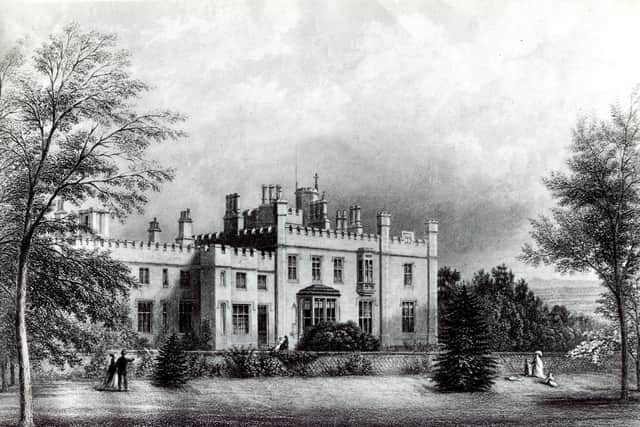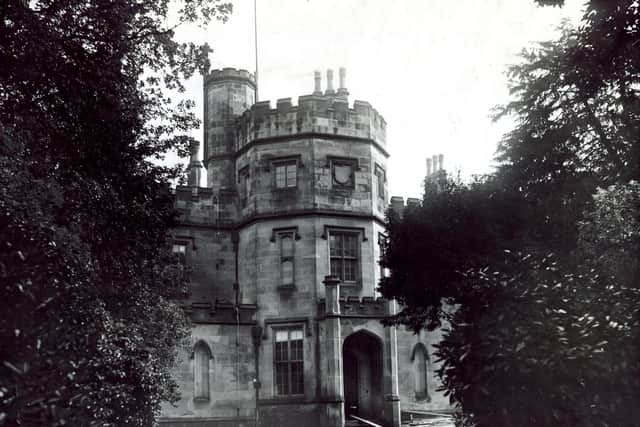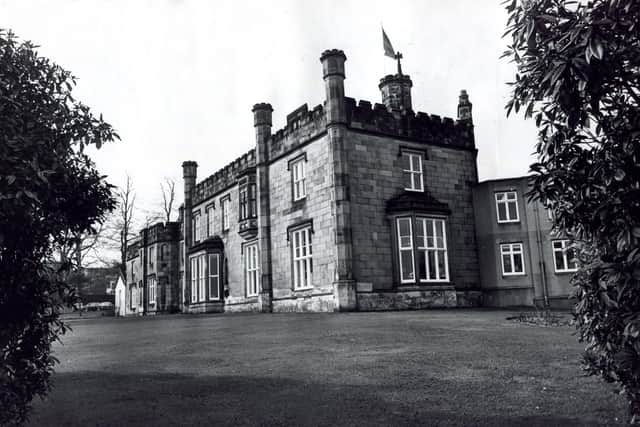Restorations - Sheffield 'castle' Banner Cross Hall could have new occupier after 90 years
and live on Freeview channel 276
Banner Cross Hall, on Ecclesall Road South, is one of the city’s most lavish heritage properties due to its battlements, octagonal turret and ornate interior.
Built in 1821, it stood in impressive grounds in what was then open country.
Advertisement
Hide AdAdvertisement
Hide AdIt was Grade II listed in 1973 and for the last 90 years has been the headquarters of Sheffield’s biggest construction company Henry Boot.


WHEN WILL A DECISION BE MADE?
But boss Tim Roberts says it is leaky and draughty and would cost millions to upgrade. Faced with such enormous, and growing, expense, bosses will decide this year whether to move out - raising the prospect the building could be put on the market.
Mr Roberts said: “It is much loved but in need of a tremendous amount of investment.


“We have got to decide whether we are going to invest that money or think about another office.”
WHAT STATE IS IT IN NOW?
Advertisement
Hide AdAdvertisement
Hide AdThe costs can be broken down into two categories, he added: modernisation and making it environmentally friendly, within the rules laid down by its listed status.
He said: “Parts are not properly wind and water tight. It’s a big listed building and its all single-glazed sash windows.


“I’m fond of it. But I believe you need to offer a good environment to work in. It’s an important decision for the business.”
If the firm moved out they would probably stay in Sheffield.
“It’s hard to imagine we would move away,” he added.
WHAT ARE THE OPTIONS?


Advertisement
Hide AdAdvertisement
Hide AdBut if it did go, the company would have to decide what to do with the building, which it owns.
The firm has a property development division which could apply to convert it and develop the grounds.
Or it could sell. Could this see it return to being a magnificent family home?
BUSINESS NEWS: The Floow acquired and applies for £4.8m loan
A Sheffield estate agent, who asked not to be named, thought it would be unlikely.
Advertisement
Hide AdAdvertisement
Hide AdShe said: “It’s on a busy main road and a rat run. If you had that much money to spend you wouldn’t want to live there.
“It’s too big for one house, you’d look to redevelop it into offices or apartments with houses in the grounds if you could get permission.
“Despite the cost, if it came on the market someone would buy it and develop it. Its got a lost of history and a lot of space and could be something special.”
The present day Banner Cross Hall dates from 1821. However, an Elizabethan mansion was located on the site earlier.
Advertisement
Hide AdAdvertisement
Hide AdThis was one of the seats of the Bright family of Whirlow, who owned much land and property in the Sheffield area and had connections with Carbrook Hall and Whirlow Hall.
BUSINESS NEWS: Airport applies for £20m loan
In 1748 it passed via John Bright’s granddaughter and heiress Mary Dalton to her husband Lord John Murray, Colonel of the 42nd Regiment of Foot and Aide-de-Camp to King George II.
The Murray family landscaped the grounds, planting woodland and creating a kitchen garden, according to ‘Sheffield‘s Remarkable Houses’, by Roger Redfern.
When Lt. General William Murray inherited he employed Jeffry Wyattville to refashion the house between 1817 and 1821. The result was a grouping of gables and turrets which gives the illusion of the hall being much larger than it actually is.
BUSINESS NEWS: 500 jobs at battery factory
Advertisement
Hide AdAdvertisement
Hide AdThe city of Sheffield expanded and surrounded, and the hall lost its rural seclusion. It passed to the Greaves Bagshawes of Ford Hall, Chapel-en-le-Frith in the second half of the 19th century and was then rented out.
In 1900 the tenant was Douglas Vickers J.P. a member of the eminent Sheffield engineering family Vickers. In 1932 the house was purchased by Henry Boot Plc and has been used as its headquarters since.
According to historicengland.org.uk it is built in the Tudor Gothic style and features a three-storey tower with crenellated turret.
The crenellations are continued right round the hall and are an eye-catching feature. The roof has eight significant chimney stacks. The interior has Tudor arched doorways and moulded cornices. The octagonal entrance hall has a Tudor arched fireplace and enriched plaster wall panels. It also has an old dairy in the grounds.
WHAT DOES THE GRADE II LISTING COVER?
Advertisement
Hide AdAdvertisement
Hide AdThe website explains what the listing covers. It states: “Unless the List entry states otherwise, it includes the structure itself and any object or structure fixed to it (whether inside or outside) as well as any object or structure within the curtilage of the building.”
The hall has multiple entries on the Sheffield City Council planning department website. They include applications to prune trees covered by tree protection orders.
In 2005, the firm applied to build six apartment blocks and two houses in the grounds. The bid, and an appeal, were unsuccessful.
In 1982 and 1986 it applied to alter and extend buildings to be used as offices and create a new access road and car park. Both were refused.
WHEN WAS THE COMPANY FOUNDED?
Advertisement
Hide AdAdvertisement
Hide AdThe company was founded by Henry Boot in 1886. Born a farmer's son in the small village of Heeley just outside Sheffield, he served a seven-year apprenticeship and worked for 20 years with local building firms before setting up on his own.
The business rapidly grew, taking on larger scale public contracts and housing projects. Henry's eldest son, Charles, (1874-1945) joined the business after leaving school and it was he who transformed Henry Boot & Sons into one of the most successful construction and housing businesses between the wars.
Today it is involved in two Heart of the City projects in Sheffield city centre. It is working on ‘Block H’ revamping buildings on Cambridge Street and building a new low carbon office block. It is also constructing Kangaroo Works which will be 365 flats on Rockingham Street.
